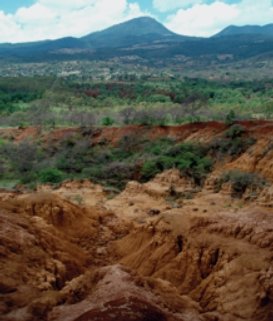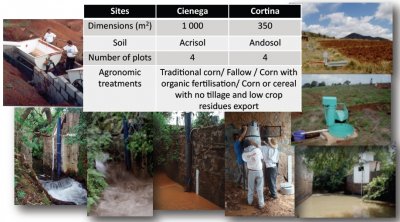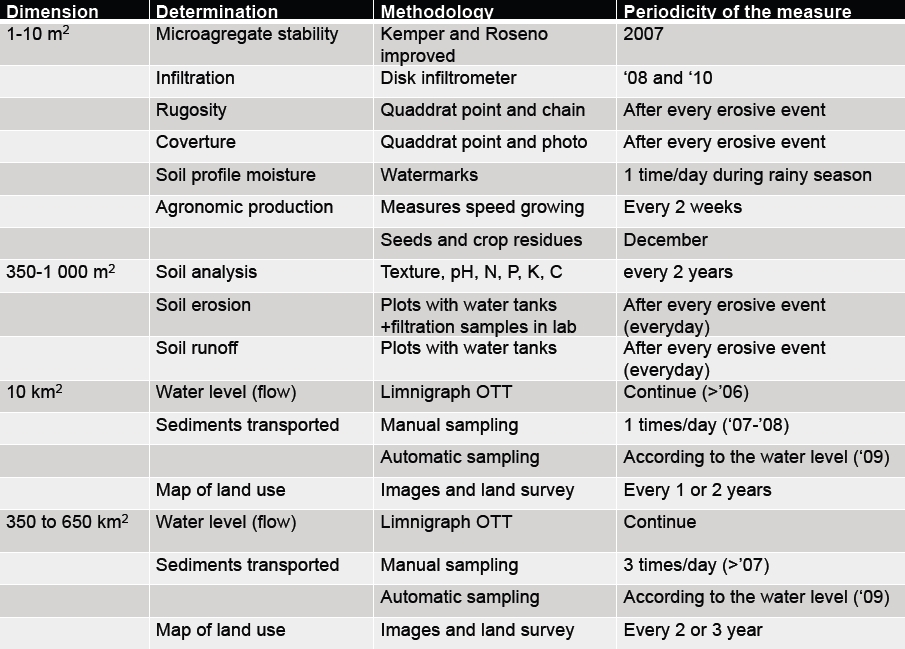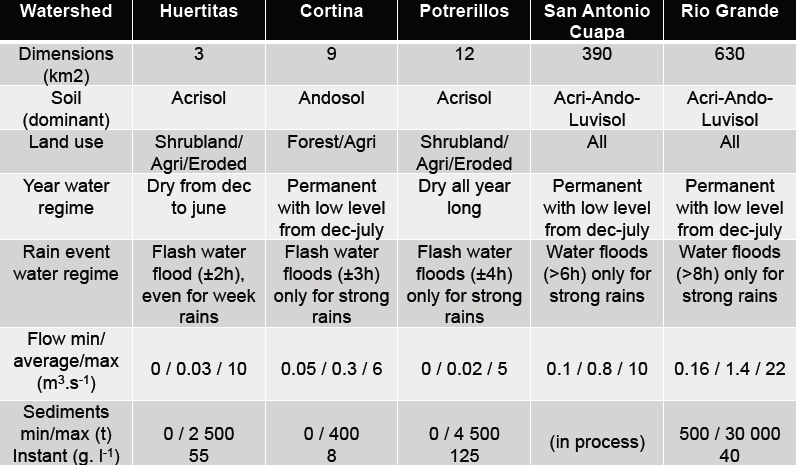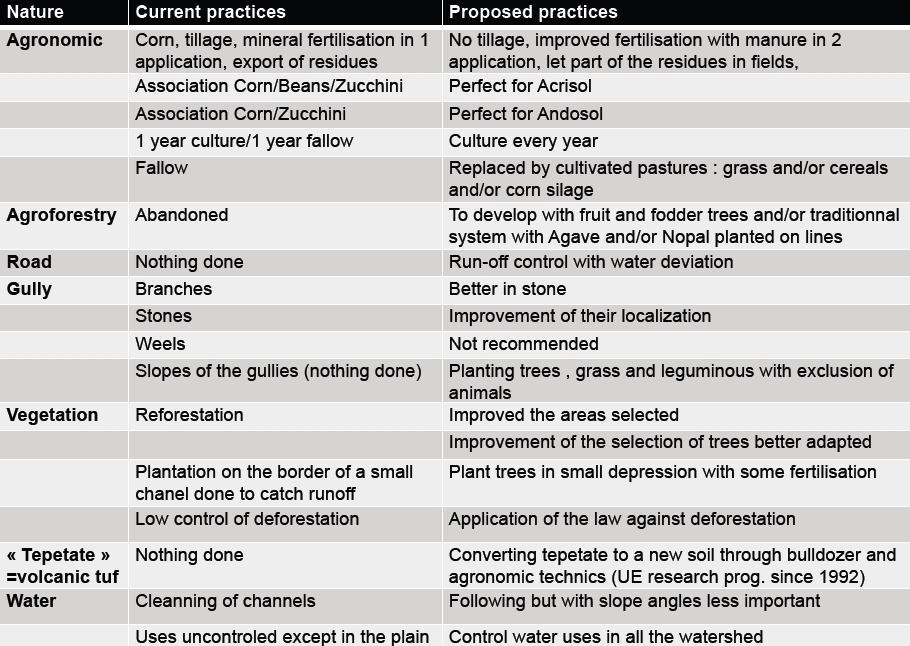 |
Author: Christian Prat (IRD)
|
Cointzio watershed (650 km²) has a temperate semi-humid climate with a rainy season from June to October. It has three types of soils and land uses distributed over the landscape:
- Luvisol irrigated and highly mechanized agriculture in the plain,
- Acrisols with a moderate to low mechanization for a survival agriculture on the hills and
- Andosols mainly covered by forest over ±2300 m.
Cattle are everywhere without any real control. Since 2007, avocado plantations with drop irrigation have been established on Andosols.
| Land degradation is studied at several nested scales |
There is two main scales for two kinds of test:
- farmer plot scale for testing agronomic options (2004-2008,
- watershed scale for testing and evaluate land use managements (Since 2007.
These tests are conducted according to the soil type (Andosol or Acrisol), the land use (agriculture, forest, pasture) and focused on small farmers, with low to moderate mechanization, with usually no irrigation, low incomes and school level. Data are collected in the field and from administration achives whose records sometimes cover long periods.
- Only 20 potential erosive events out of 130 rain events/ year and 6 to 12 real erosive events.
- It is possible to replace the year/fallow system by crop every year. Yields are better with higher agronomic attention. Cereals and silage crops should be done on Andosols. Corn with or without associated crop, should be cultivated on Acrisols and Luvisols.
- Soil erosion on plots, vary between 1 to 5 t/ha/y according to the agriculture system : the more the soil is protected and less broken up, less soil erosion.
- Soil runoff on plots is extremely high during fallow (over 80%) and cause down slopes severe gully erosion. This is due to the soil compaction done by animals. For cultures, with or without plowing, it is necessary to have crop residues covering, at least, 30% of the surface to reduce the runoff < 10% rain amount. It is also essential to limit the number of animal grazing.
Particular land degradation issues
- The main cause of the land degradation is the presence of cattle everywhere. It is a necessity to control animals and develop strategies to reduce overpasturing and implement sillage cultures as well as convince the farmers of this situation.
- The new development of avocados plantation generated problems, specially for the soil during the trees plantations (no land cover, plantation following the slopes…) and after for the water due to the irrigation (drop irrigation) were water ressources are limited.
|
Land use and practice results
|
|





